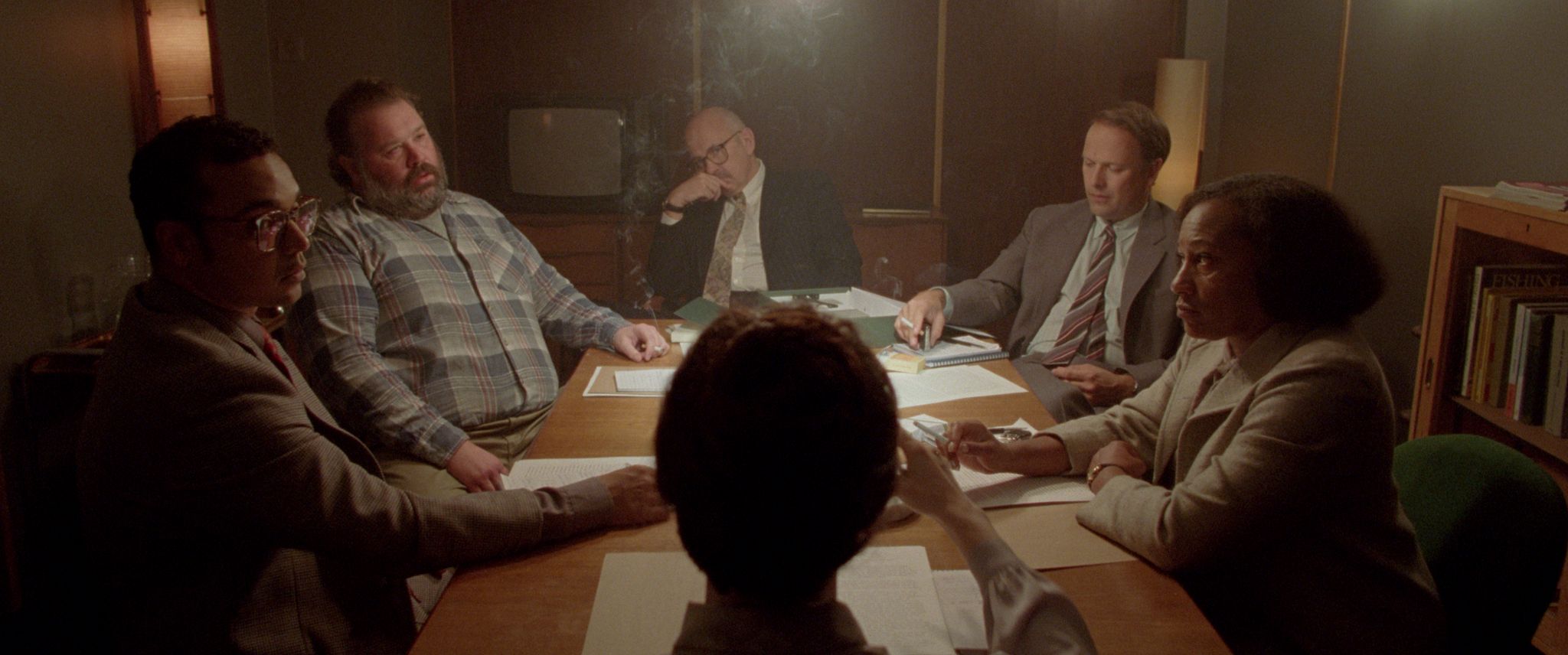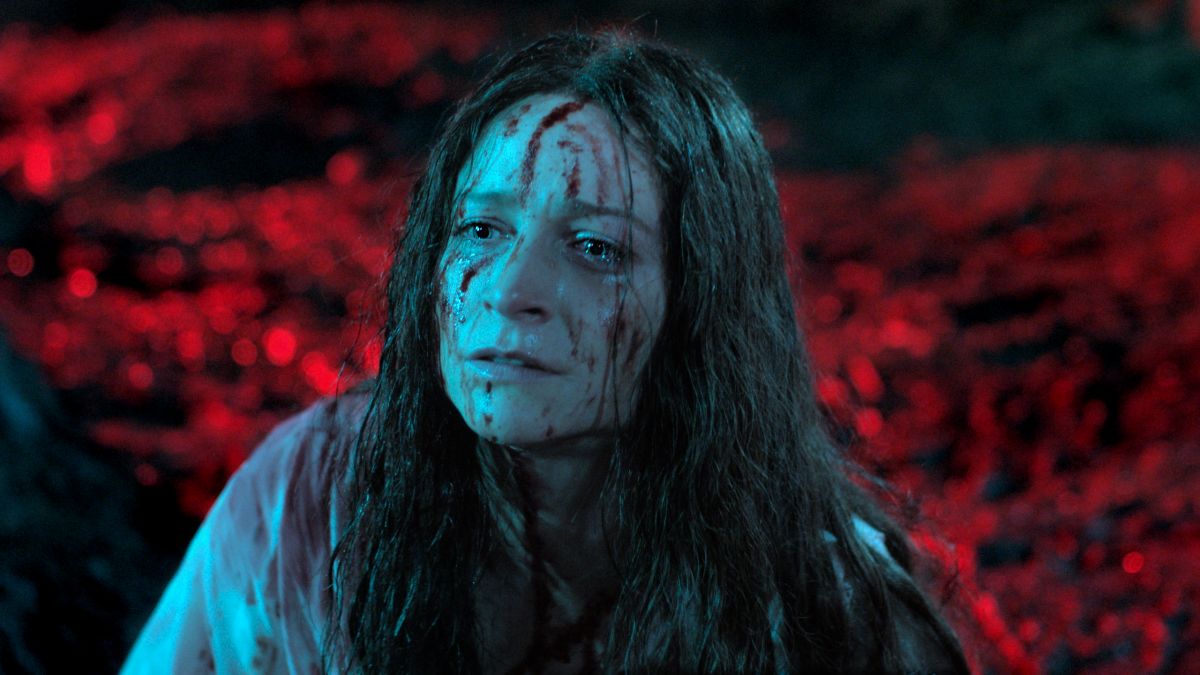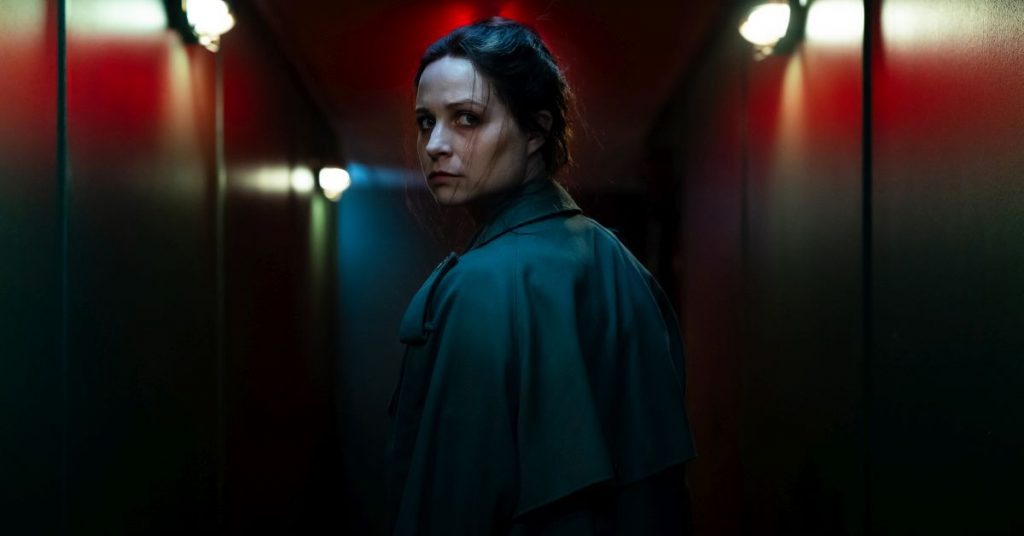Synopsis:
Film censor Enid takes pride in her meticulous work, guarding unsuspecting audiences from the deleterious effects of watching the gore-filled decapitations and eye-gougings she pores over. Her sense of duty to protect is amplified by guilt over her inability to recall details of the long-ago disappearance of her sister, recently declared dead in absentia. When Enid is assigned to review a disturbing film from the archive that echoes her hazy childhood memories, she begins to unravel how this eerie work might be tied to her past.
When commercial VHS tapes first hit the scene in the late 1970s/early 1980s, a rush of direct-to-video titles flooded the market. Most of them made as cheaply as possible. Many of them were horror films, some pushing the boundaries of taste as far as they could. Naturally, people complained about these violent, often unrated films. What message were they sending children? Did violent media lead to an uptick in real-world violence? Some countries sought to regulate the content of these films, like the British Board Of Film Classification, and ban the more extreme ones. To do this, places like the BBFC employed film censors, whose job was to comb through these “video nasties,” and make notes about what needed to be cut to secure a certain rating – and guaranteed release.
Censor is the surreal nightmare of one such film censor – Enid (Niamh Algar). It’s an endlessly compelling film about a woman’s trauma slowly taking over her life. While it takes inspiration from those so-called “video nasties,” its scares are rooted in the emotional reality of Enid’s situation. So, hardcore horror fans may find themselves wishing the film leaned a bit harder into the gory, violent VHSes it takes inspiration from. But lovers of psychological horror will be enthralled by the exploration of Enid’s trauma. How much of what we see is real and how much is the result of Enid’s unreliability?

The Plot
Enid is a film censor for the BBFC. She spends her days meticulously evaluating the “film nasties” that pass through the office, deciding whether or not they’re appropriate for release. One particular film, “Don’t Go in the Church,” triggers painful childhood memories of the day her sister, Nina, disappeared in the woods. The closer Enid inspects the film, the more convinced she becomes that its lead actress is actually her missing sister. Determined to finally find her sister, Enid works to track down the film’s mysterious director, Frederick North, in search of answers.
Censor is a slow burn of a film. Much of the first half-hour is spent establishing Enid and her colleagues. “Don’t Go in the Church” doesn’t appear until the half-hour mark, roughly. And the pacing doesn’t pick up much from there. This isn’t a problem, though. In fact, the slower pace adds to the film’s sense of tension. There’s plenty of room for scenes to breathe and luxuriate in their unsettling atmosphere. It’s never so slow that it’s boring, but it also never moves particularly quickly. Ultimately, I think it strikes a good balance. I easily got swept up in what was going on, especially as the tension built and I grew more invested in Enid as a character. It’s a lot of fun watching her try to make sense of this strange, unsettling situation.
If you’re not used to watching more abstract films, Censor might seem a little baffling. The more Enid looks into “Don’t Go in the Church,” the more abstract the film gets. Mostly, it still plays out fairly linearly, but it can be a little hard to follow exactly what’s going on the further into the film you get. To be fair, it’s always difficult when you’re dealing with an unreliable narrator and a blurring of reality and fiction. Mostly, it works, though. The last act of the film, however, probably veers a little too hard into the abstract and doesn’t quite stick the landing narratively. But emotionally, I think it managed to pull off what it was going for – particularly when it comes to Enid’s character arc.
Enid’s Trauma
At its heart, Censor is about how Enid deals with the trauma of her sister’s disappearance. It’s been years and years since Nina disappeared, but Enid is unable to move on. It’s what leads her to her job as a film censor. She drowns herself in her work as a coping mechanism, trying to assuage the guilt she feels over Nina’s disappearance. This inability to move on is also what draws her further into “Don’t Go in the Church.” Enid is desperate for any sign that her sister’s still alive. And the moment she senses the slightest possibility that Nina’s still alive, she jumps onto it. She so wants to save her sister and fix her trauma that she’s willing to go as far as it takes – dangerously so.
I love Enid’s trajectory over the film. She starts as this woman who seems perfectly put together, wholly in charge of her life. And then that carefully manufactured persona slowly starts crumbling. The more she looks into “Don’t Go in the Church,” and searches for its mysterious director, the more potentially disconnected from reality she becomes. And Niamh Algar portrays it with heartbreaking authenticity. From the moment she steps on screen, you immediately sympathize with her. And as things grow tougher and tougher, you start fearing for her. I just wanted things to work out for her, for her to find her sister. And watching her go through all of this hurt. I love it when characters can have such an immediate, visceral effect on me, and Enid is absolutely one of those characters.

Surreal Visuals and Audio
Director Prano Bailey-Bond imbues the film with the kind of tension that creeps up on you until it becomes overwhelming. And most of that tension comes from the film’s visuals and audio. Censor may not be super gory, but it may be too much for more squeamish viewers. However, if you can get past these brief moments of gore, there’s a lot of surreal imagery to behold. At first, it’s subtle. Obvious dream sequences and weird excerpts from cheap horror films. But as E the film progresses, it embraces its surreality more and more. Enid’s dreams grow more intense and disturbing. And elements from the “video nasties” begin to bleed into the real world. There are even scenes where you’re unsure if you’re witnessing the “real world,” a “video nasty,” or both – and it’s brilliant.
Adding to the surreal nature are Tim Harrison’s sound design and Emilie Levienaise-Farrouch’s score. When combined, the two create this almost claustrophobic feeling. A kind of droning, uncomfortable sound that makes your skin itch and your hair stand on end. It perfectly reflects Enid’s emotional state as she falls further and further down the rabbit hole. Good horror comes from the mixture of visuals and sound, and Censor nails that mixture. In fact, I think the film’s sound design and score may have made me tenser than the visuals did. But the combination of the visuals and the sound created this endless tension that built into an overwhelming dread, and it was perfect.
Final Thoughts
Censor isn’t gonna be for everyone. It’s far more interested in delving into the psyche of its main character than it is in adhering to traditional horror movie tropes. It’s simultaneously not gory enough for gore-fanatics but too gory for more squeamish audiences. And the further it dives into its more abstract ideas and surreal visuals, the harder the story is to follow. But if you can vibe with all of that, you’ll be rewarded with an extremely satisfying character study. And some breathtakingly creative visuals. Niamh Algar is utterly captivating as Enid, and it’s heartbreaking watching her journey throughout the film. The fear comes from how real all of this is for her, and how potentially disconnected from reality she is. The film deeply affected me, and it’s gonna stick with me for a long time.
Censor is in theaters now and will be available on VOD on June 18th.
Director: Prano Bailey-Bond
Writers: Prano Bailey-Bond, Anthony Fletcher
Producer: Helen Jones
Executive Producers: Andy Starke, Ant Timpson, Kim Newman, Naomi Wright, Lauren Dark, Ollie Madden, Daniel Battsek, Mary Burke, Kimberley Warner
Rated: Not Rated
Runtime: 1h 24m
Rating: 4 out of 5







